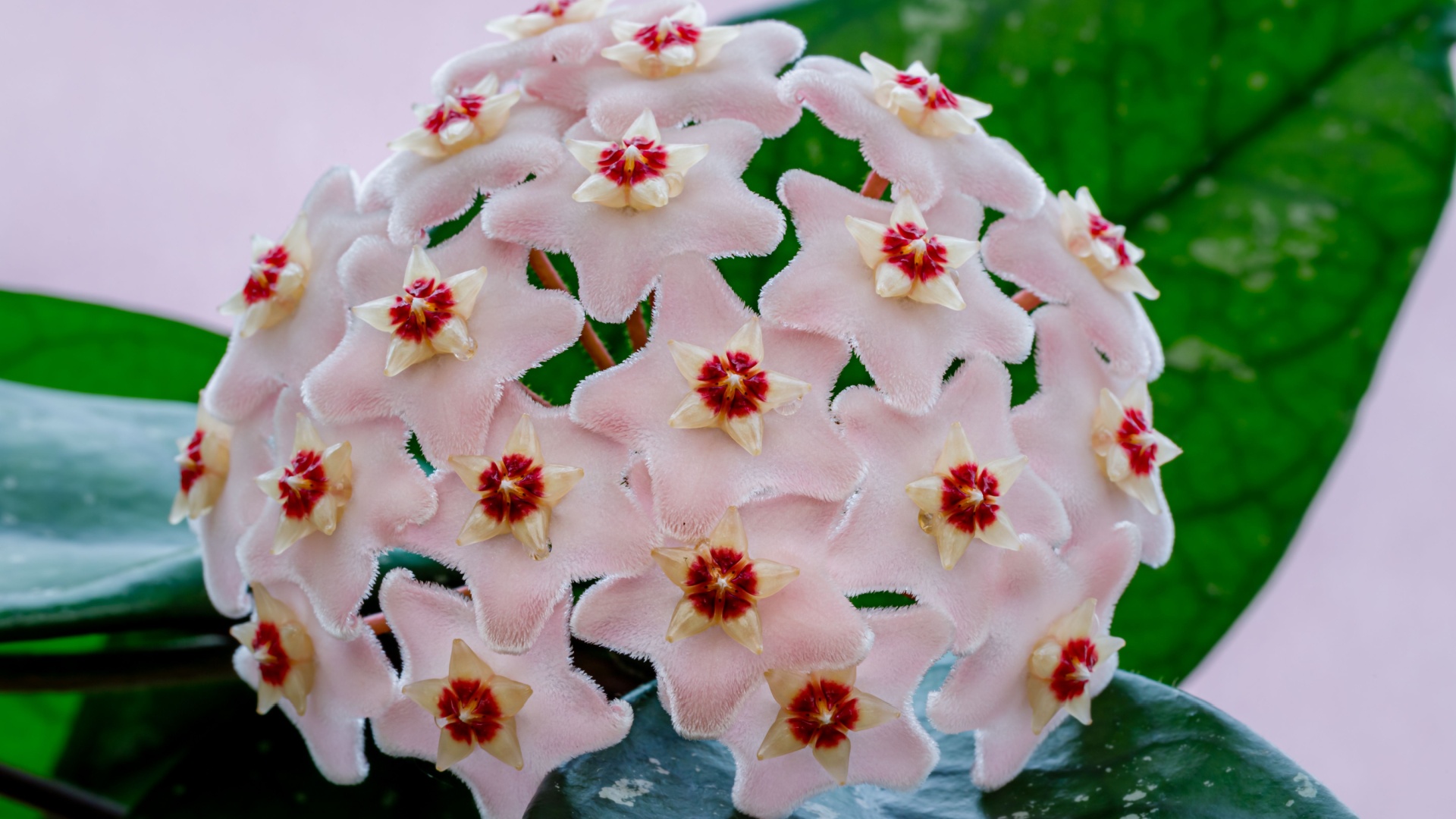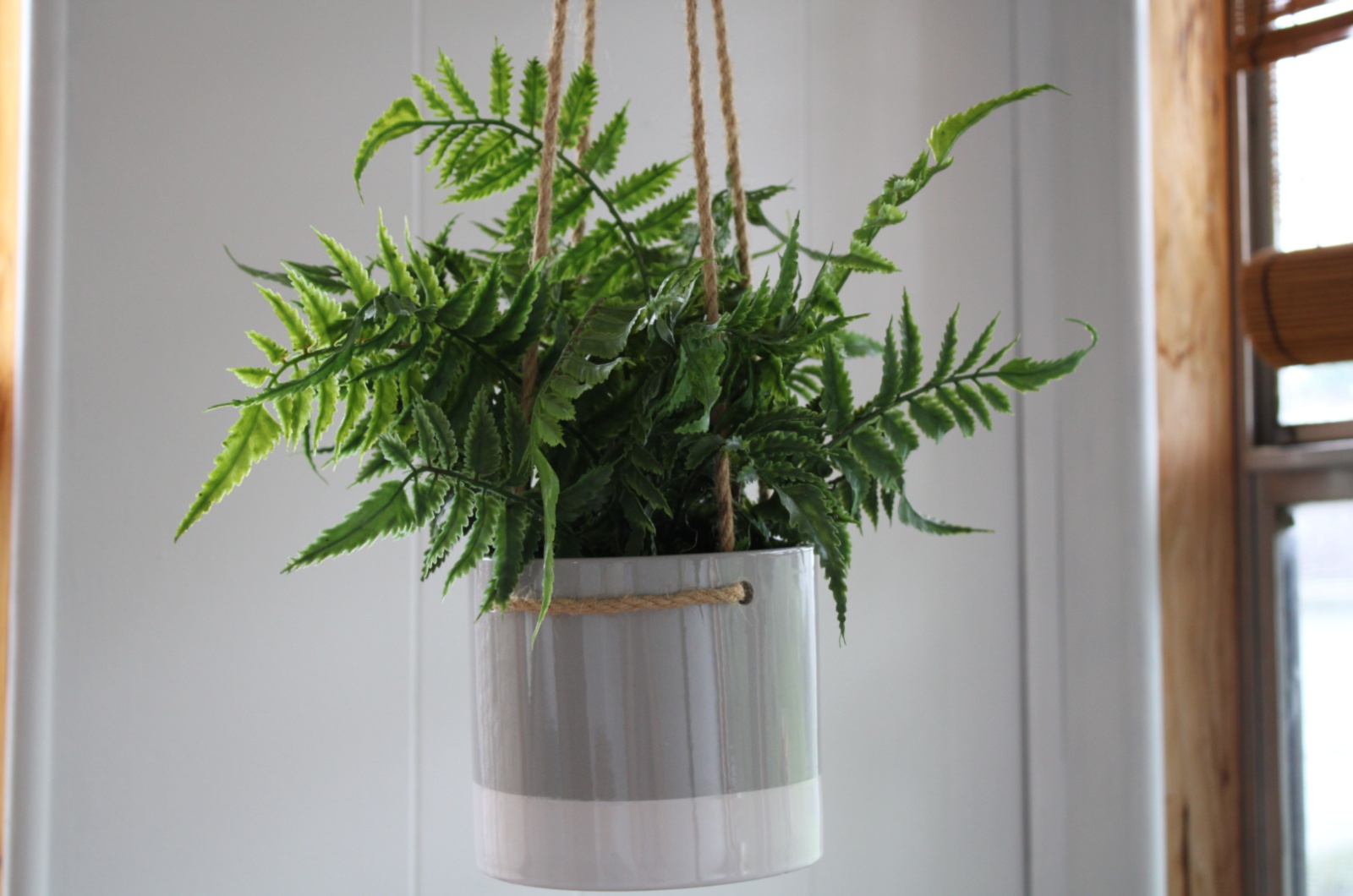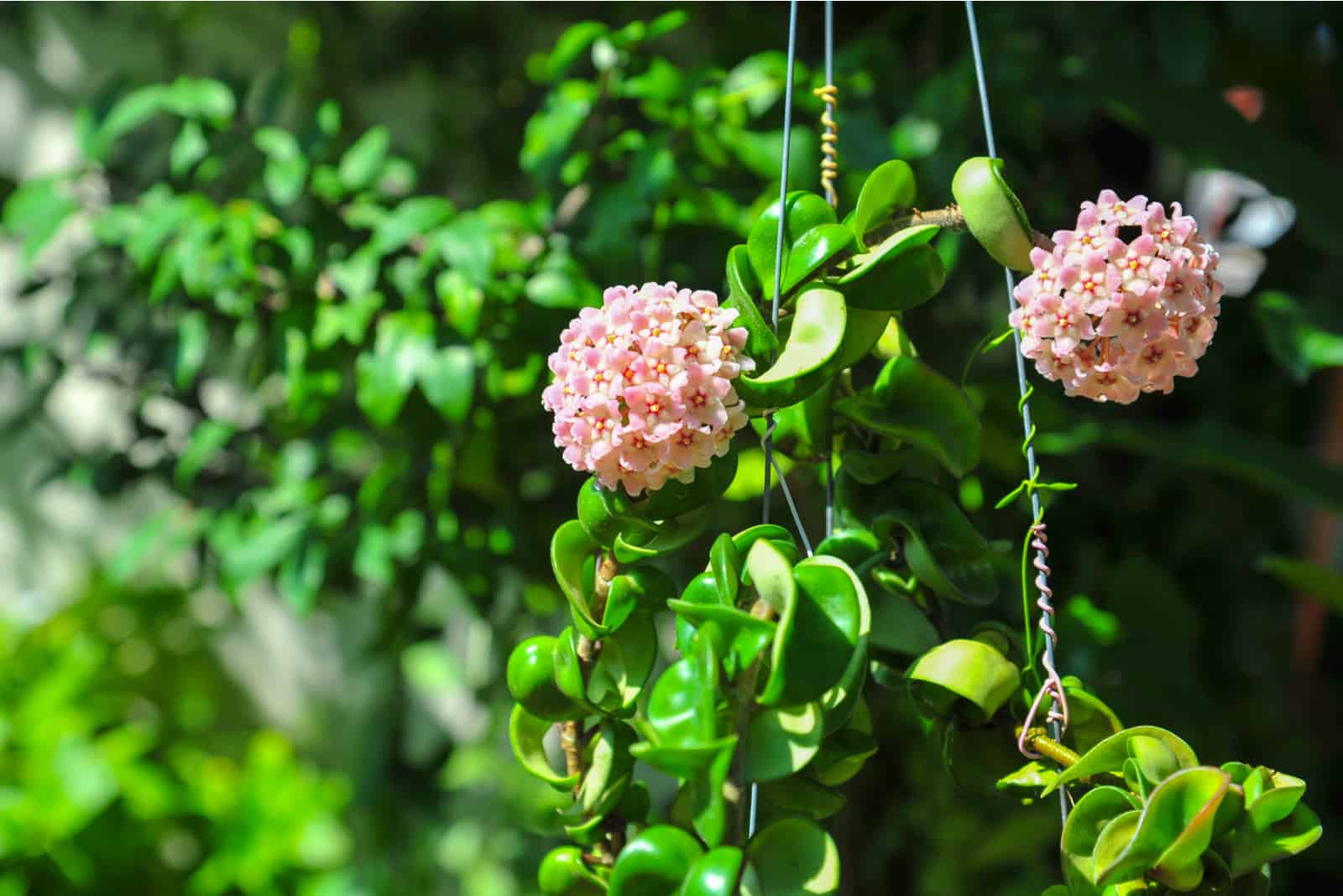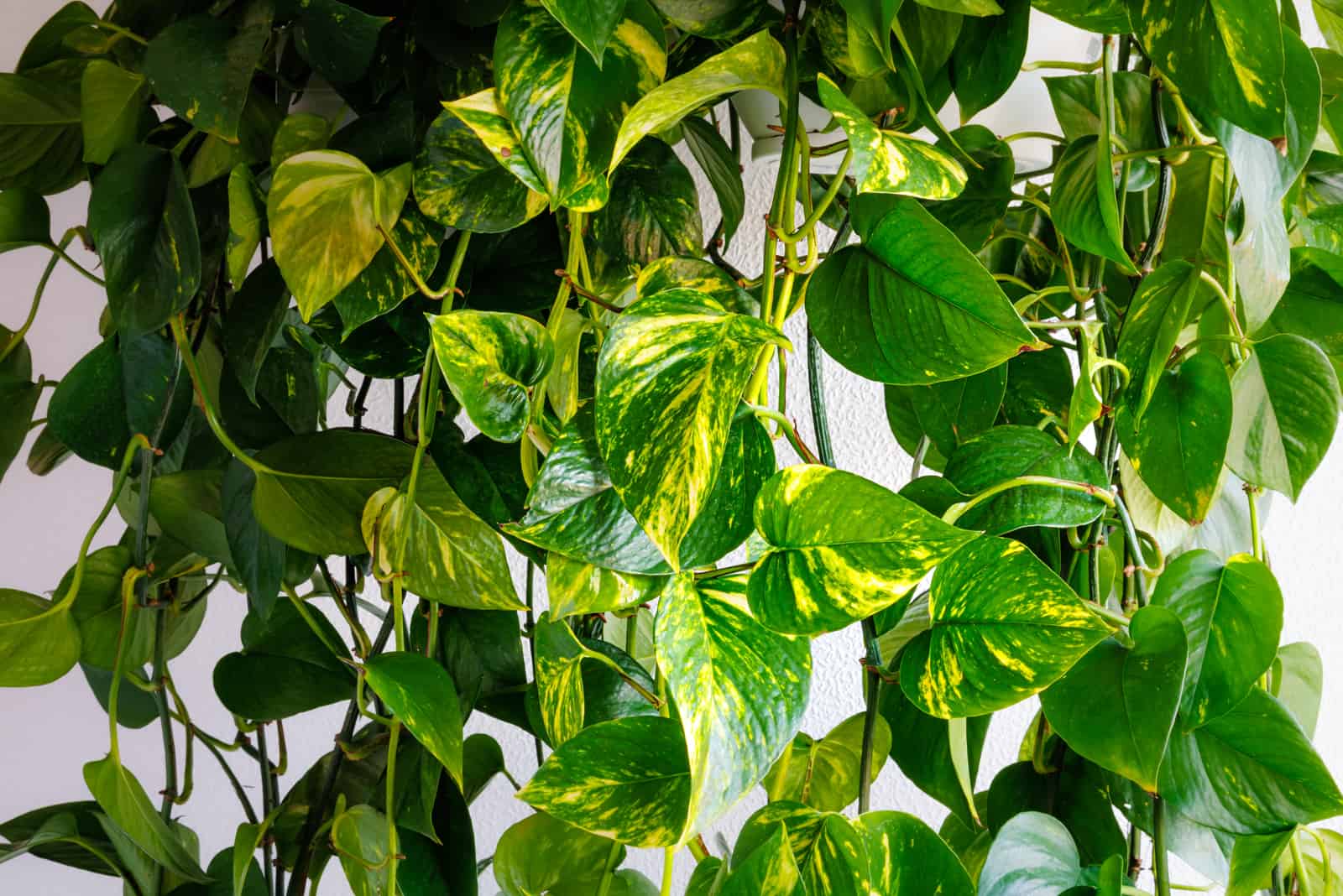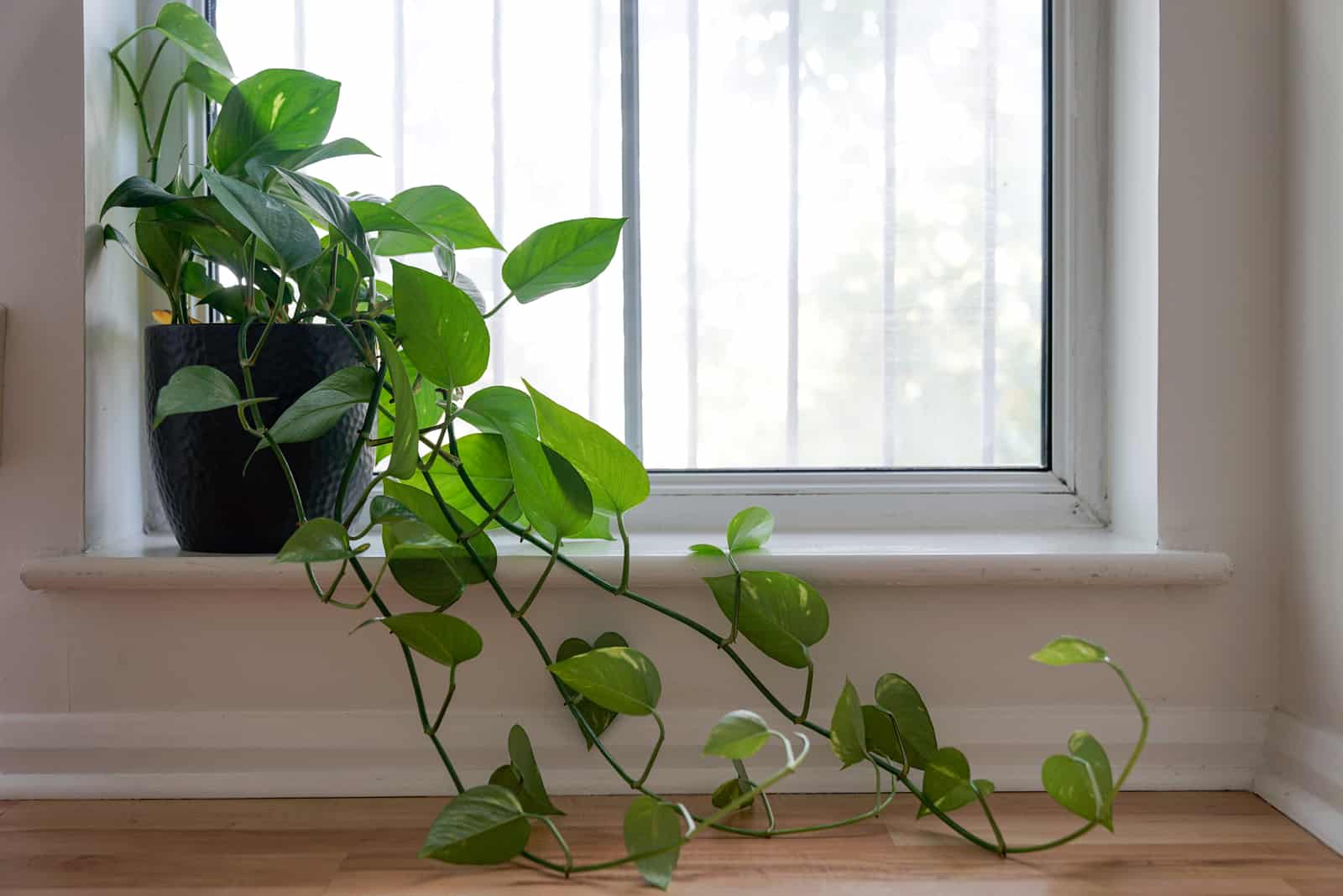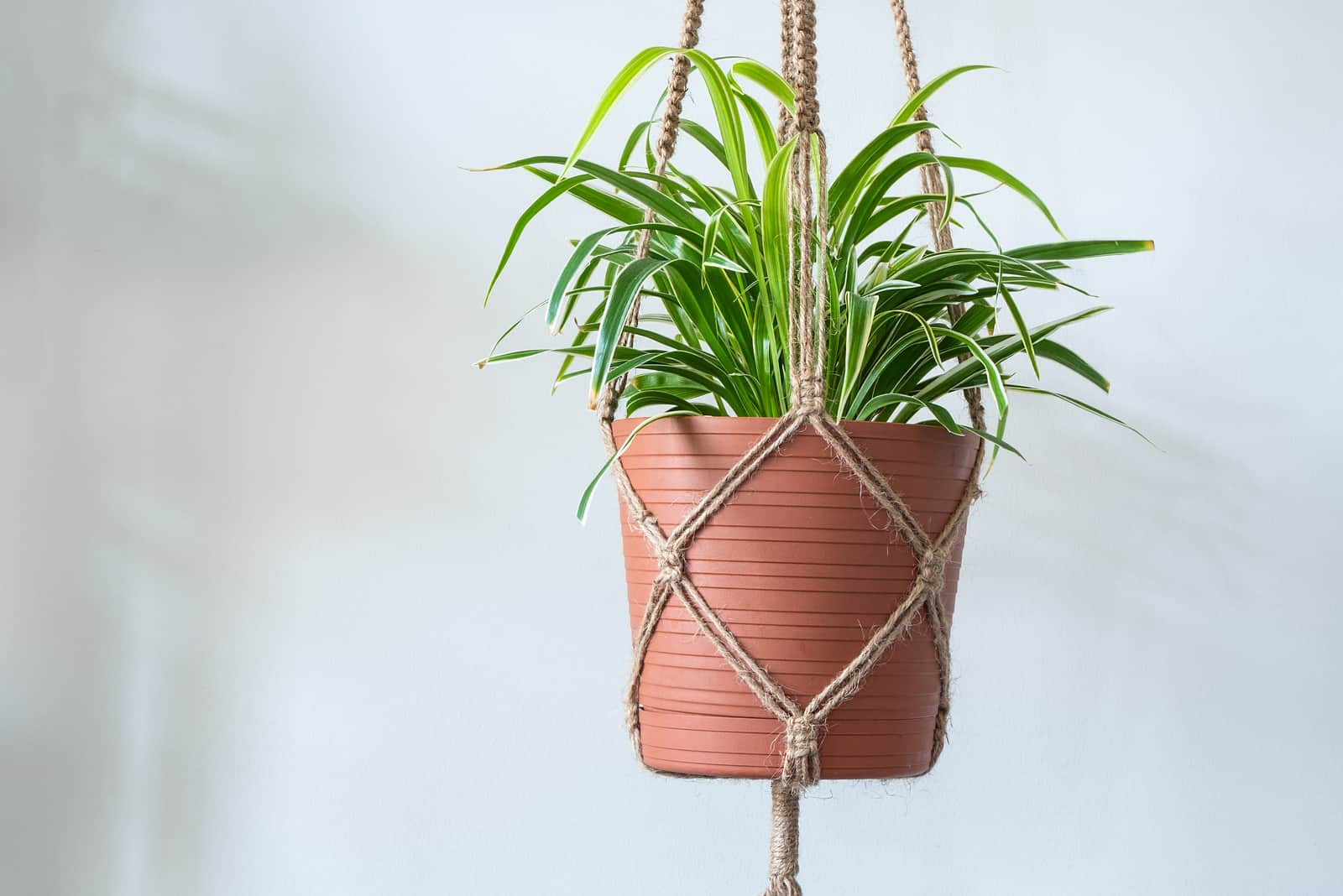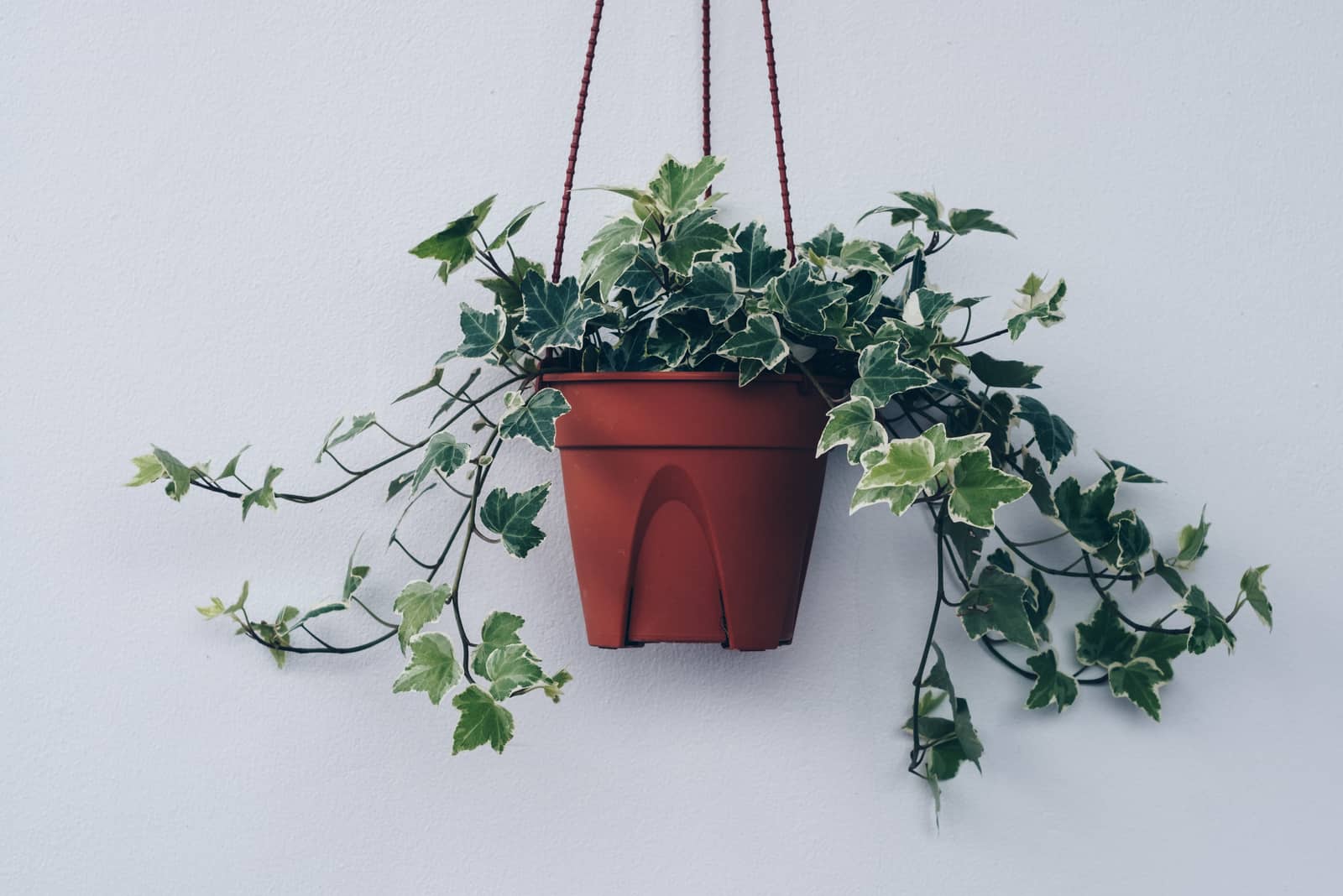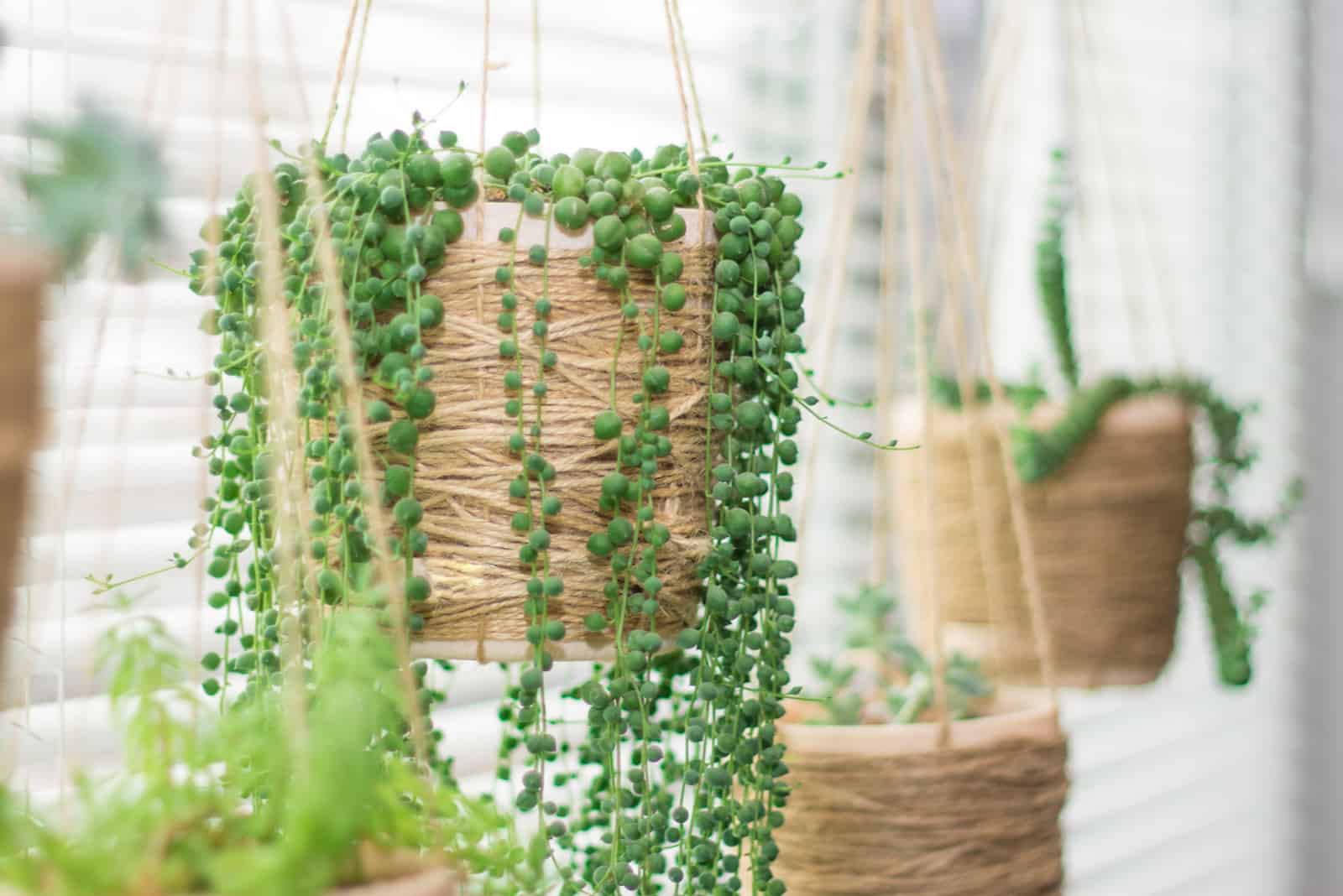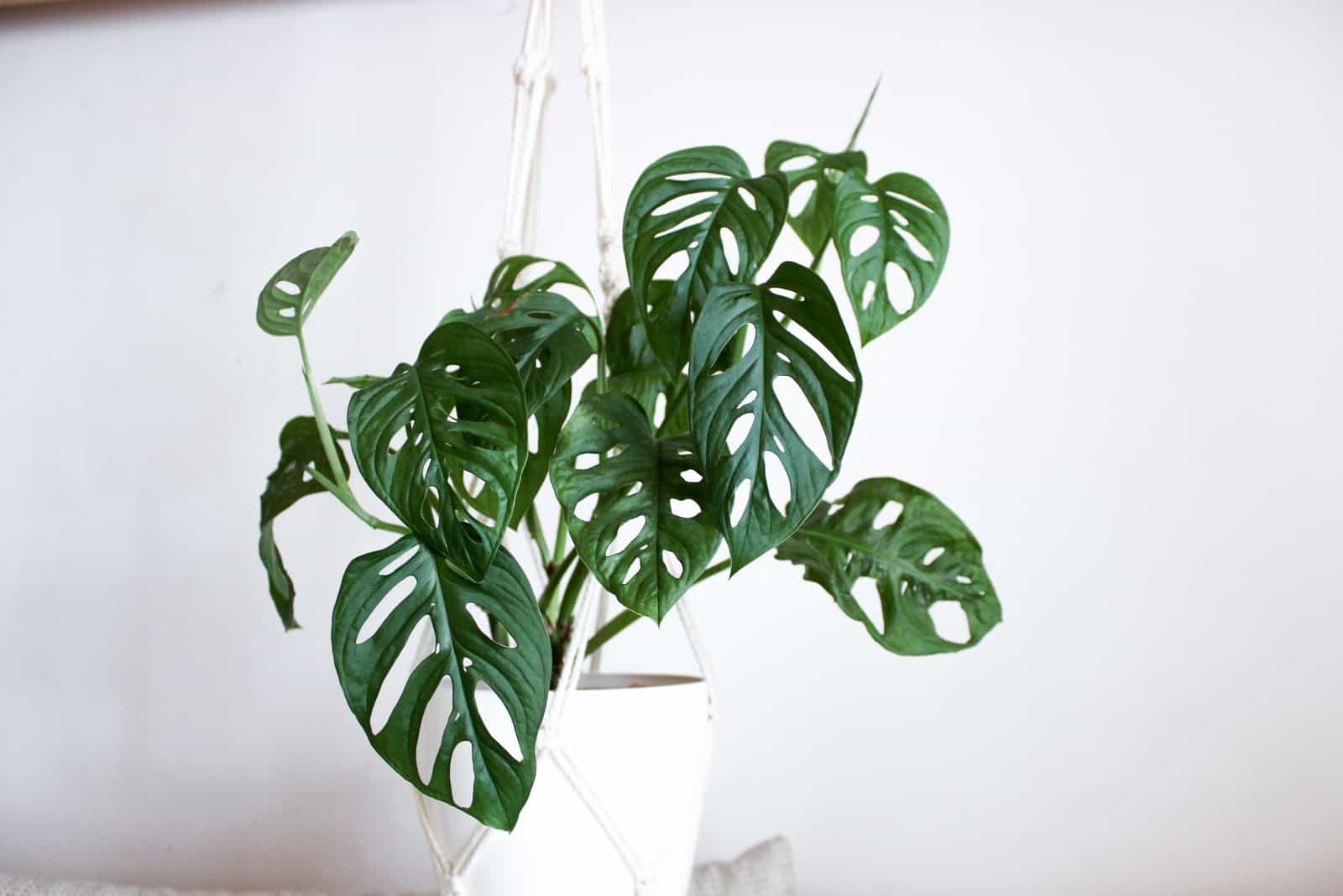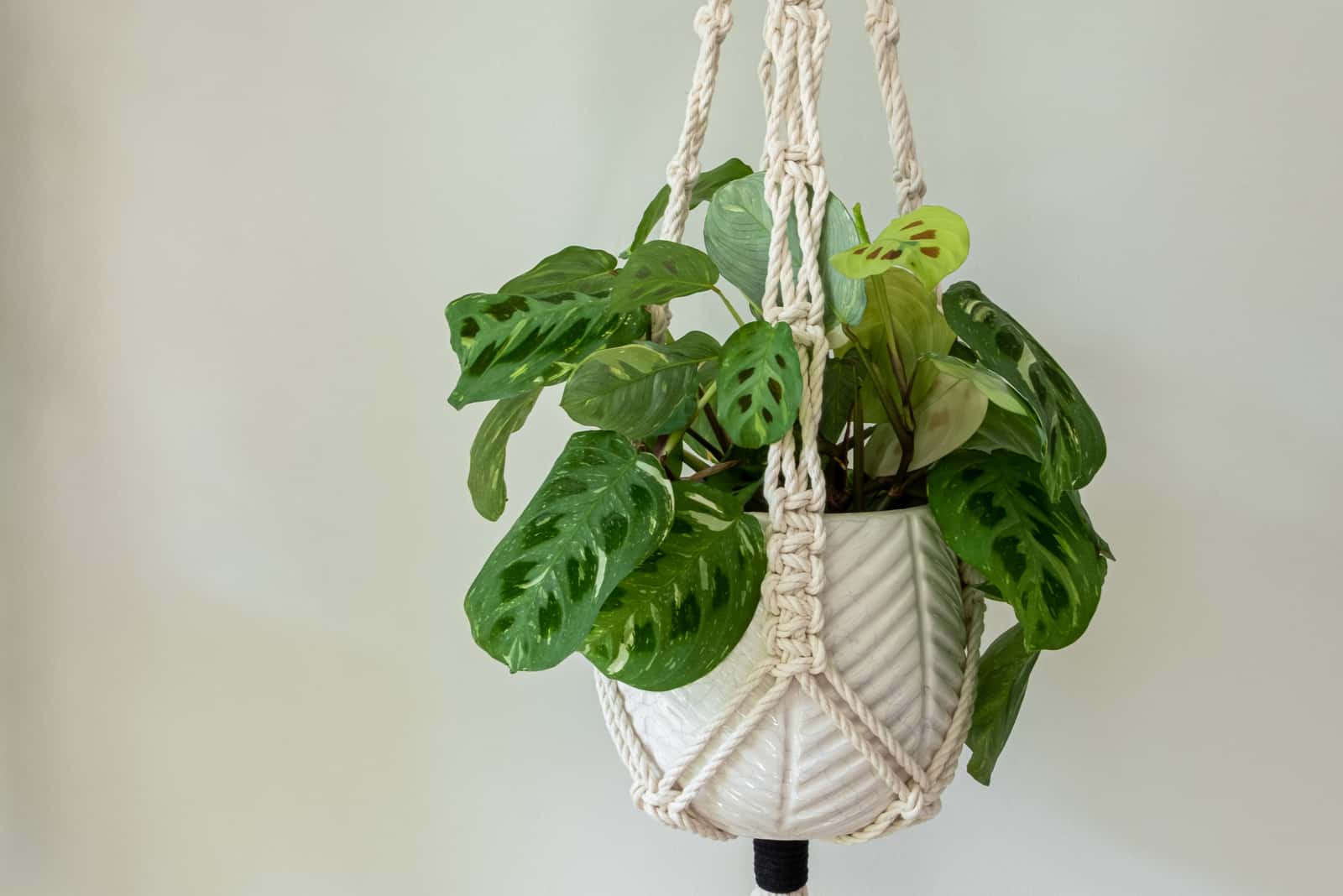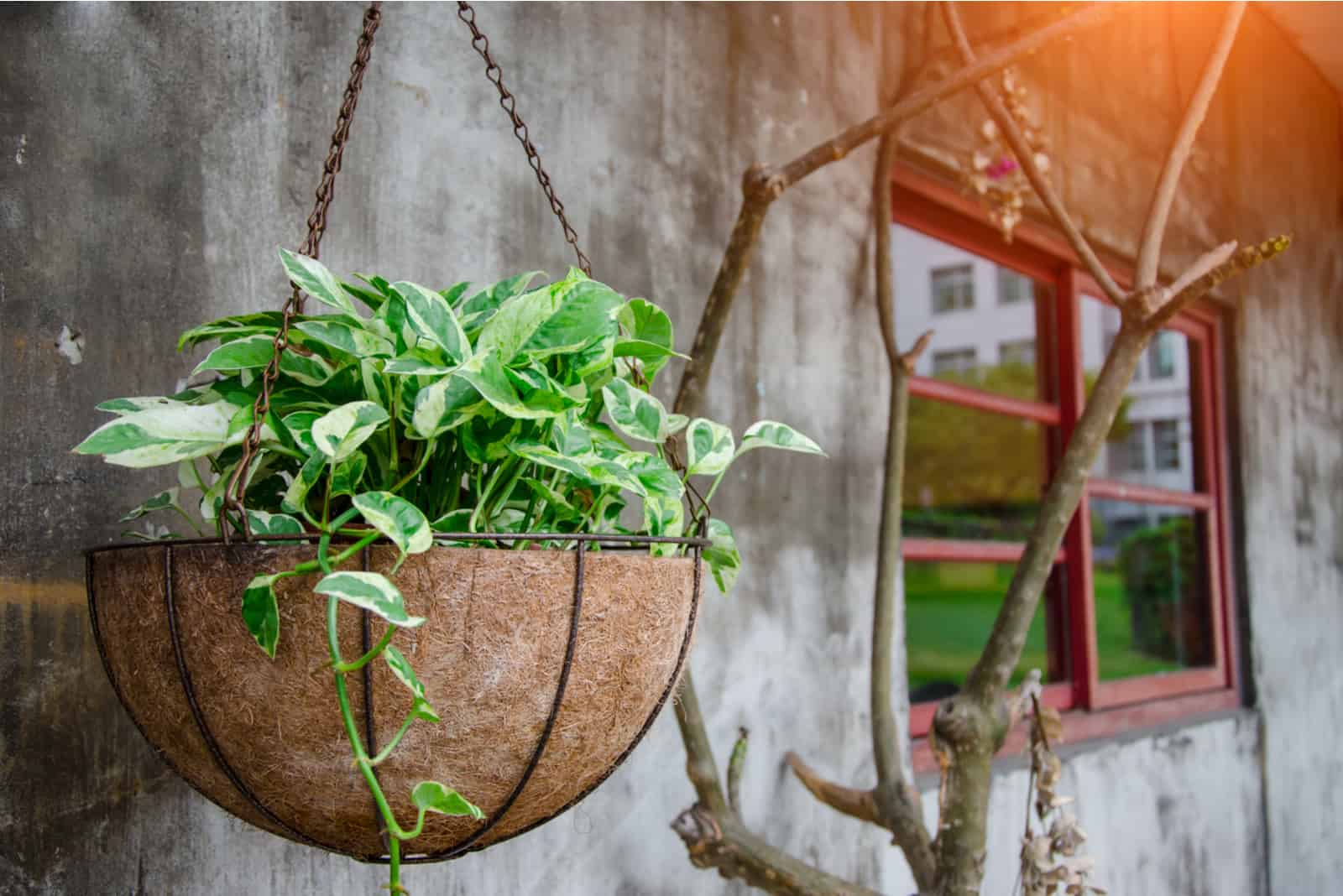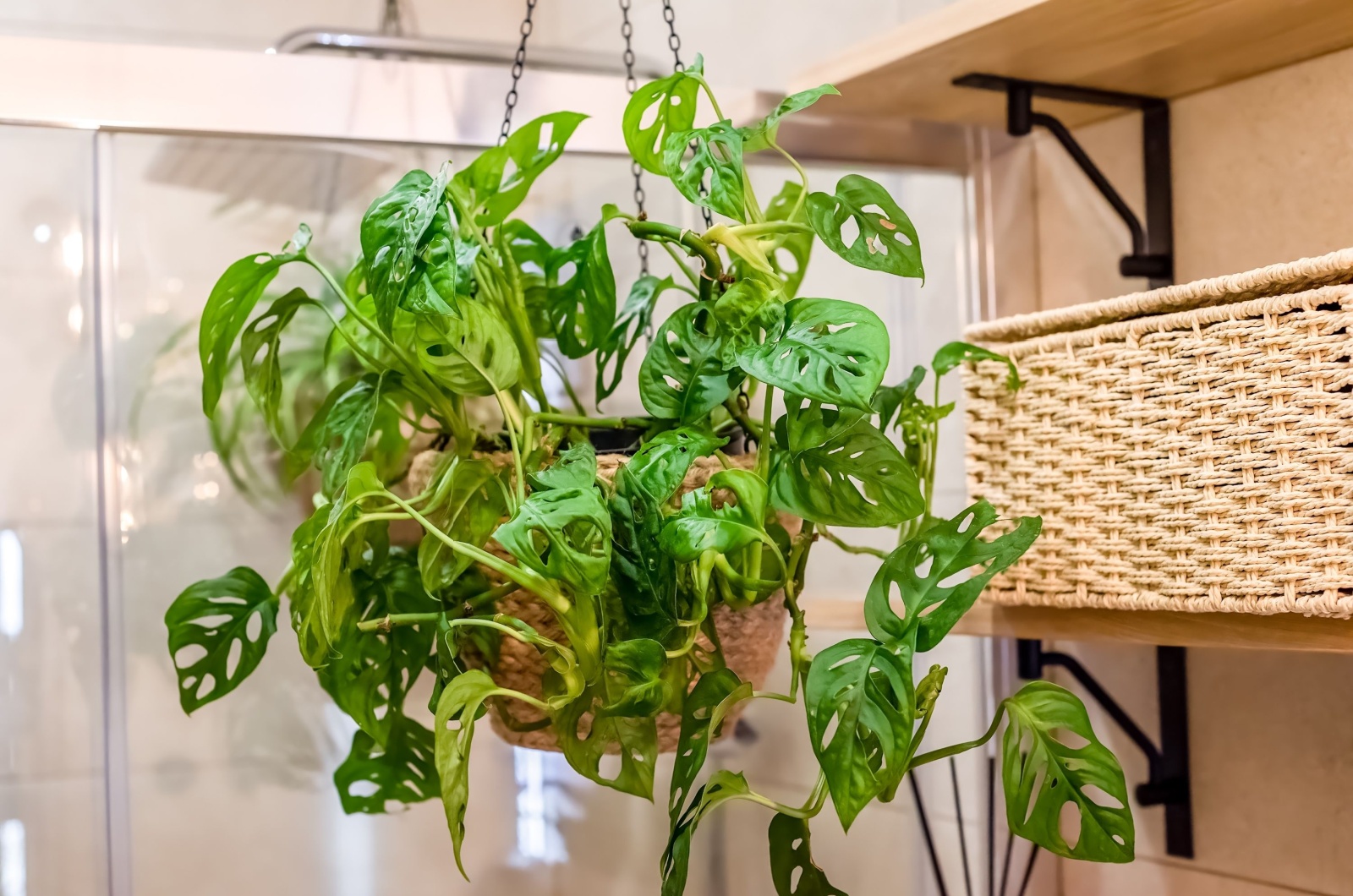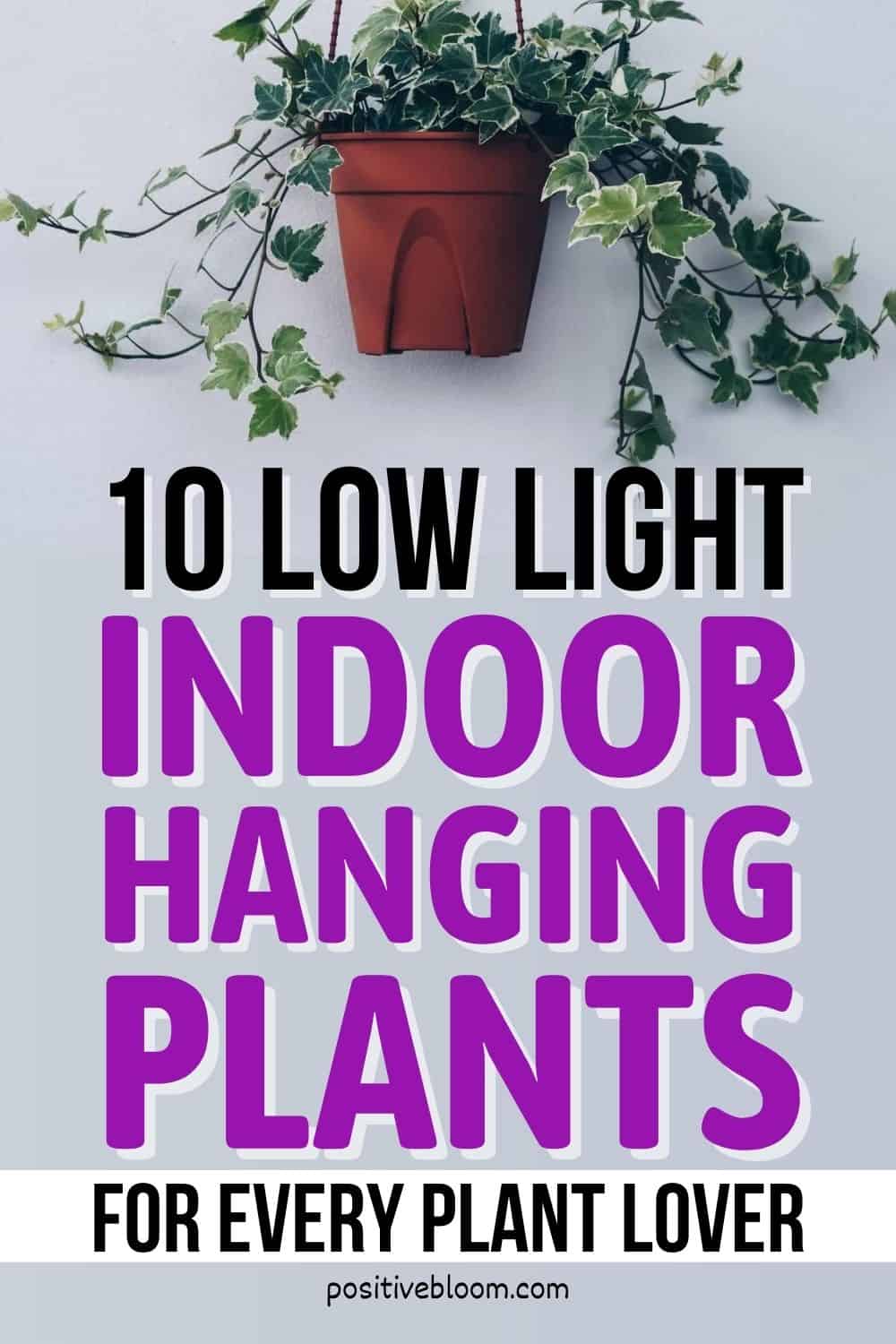Positive Bloom is an Amazon Associate and we earn from qualifying purchases through these links at no extra cost to you.
We all love plants that you can grow in hanging baskets as they improve the overall decor tremendously. But what if I told you there’s something even better than that?
Low light indoor hanging plants are the best thing since sliced bread, and there are a couple of good reasons for that.
You don’t have to worry about whether you can place them on a windowsill, and you don’t have to buy heat lamps to help them grow.
They are quite low-maintenance, and in the article below you will find ten different low-light plants that even the busiest of bees can incorporate into their hectic schedule.
You’ll find the main information about all the different plants, as well as short care guides to help you get started on an incredible journey you’ll never want to end.
Let’s begin!
10 Low Light Indoor Hanging Plants
We have brought you ten amazing low-light houseplants to spice up your house or office.
Even though we couldn’t include every plant ideal for hanging baskets, such as syngoniums and all the varieties of climbing philodendrons and monsteras, we tried to make an exciting list that includes an interesting variety.
You can expect to find pothos’, monsteras, ivies, peperomias, and even some trailing succulents on the list below.
We hope you enjoy it!
1. Hoya
Hoyas are irresistible plants that can turn unsuspecting people into Hoya aficionados in the blink of an eye!
Here’s the main info about these plants:
[table id=139 /]There are many varieties of hoyas, and regardless of whether you choose to look at the care guide for hoya fungii or any other type, you won’t be sorry as they are simply breathtaking.
Below you will find a short care guide for all hoyas, and who knows, maybe they’re the ideal air plant for your home!
Appearance
Different varieties of hoyas have different appearances. They can be glossy or matte, some are fuzzy, and others have thick leaves.
Their color also varies, and you may find varieties with red, lilac, pink, yellow, or white flowers that can do miracles for your design ideas.
Light Requirements
Hoyas love medium light levels, but will thrive equally well in low light conditions. The only thing they dislike is direct sunlight.
They can handle direct morning light, but anything longer than two hours has the potential to burn this plant’s foliage.
Water And Humidity
This climber loves regular watering during its growing season, but you should always check whether the topsoil is completely dry.
These plants enter dormancy in fall and winter and don’t require that much water. You should always ensure that the soil doesn’t completely dry out, and the hoya plant will be just fine.
Hoyas thrive in moderate humidity levels. You can always mist the plant, use the pebble tray method, or invest in a humidifier such as the one below if humidity levels in your area aren’t right for this plant.
[lasso id=”2810″ link_id=”1017″ ref=”amzn-levoit-humidifiers-for-bedroom-large-room-home-smart-wifi-alexa-control-6l-top-fill-cool-mist-for-baby-and-plants-ultrasonic-essential-oil-diffuser-customized-humidity-night-light-quiet-gray”]
Temperature
Hoyas thrive at room temperature. Anything between 60 and 85°F (15-29°C) is ideal for these plants.
If the temperatures fall below 55°F (13°C), the plant will stop growing. You have control over the indoor temperature, so that’s no big issue.
Soil And Fertilizer
Hoyas need a fertile and well-draining medium with excellent aeration in order to grow. It should also retain some water, but never be soaking wet.
In regard to fertilizers, you can use an all-purpose, mild fertilizer diluted to half-strength once a month.
Remember to always water the plant before fertilizing to avoid fertilizer burn!
2. Marble Queen Pothos
This pothos plant has a relatively simple care guide, so you won’t have to do much work to make it thrive.
Here’s the basic information about this plant:
[table id=140 /]The marble queen pothos has many different cultivars, and two of the best ones are the N’joy and the Pearls and Jade. If you can’t decide which one to get, you can always research the differences and similarities between pothos n’joy and pearls and jade.
Appearance
The marble queen pothos has bright green leaves mottled with white or creamy white variegations, depending on the plant and the cultivar.
Light Requirements
This pothos plant requires medium or bright indirect light, but it can also flourish in low light levels, which makes it a perfect plant for beginners.
Keep it away from direct light as it can hurt its delicate and colorful foliage.
Water And Humidity
The marble queen doesn’t need much water. Water the plant moderately when the topsoil is dry, and let the excess water drain away through the potholes.
This plant can tolerate average household humidity, but it does prefer slightly higher humidity levels of around 60%. If you’re unsure about your home’s humidity level, you can always invest in a hygrometer like the one below and leave nothing to chance.
[lasso id=”2812″ link_id=”1018″ ref=”amzn-acurite-digital-hygrometer-with-indoor-monitor-and-comfort-scale-01083m-room-thermometer-gauge-with-temperature-humidity-3-x-2-5-inches”]
Temperature
The marble queen flourishes in temperatures between 65 and 85°F (18-29°C). Anything below 55°F (13°C) can have severe consequences.
Soil And Fertilizer
This pothos grows best in fertile soil rich in nutrients and organic matter. The soil also needs to be aerated and well-draining, which is the best way to avoid overwatering and fungal diseases.
You don’t have to fertilize this plant as long as it’s in fertile soil, such as loam. However, if the soil isn’t so nutrient-rich, you should consider adding a diluted and well-balanced fertilizer once a month for optimal growth.
3. Heartleaf Philodendron
Heartleaf philodendrons are a must-have for every serious philodendron collector. They add a touch of beauty to your home decor and will put a smile on your face every time you walk by.
Here are the general specifics about this plant:
[table id=141 /]There are many different cultivars of Philodendron hederaceum, but our favorite is definitely the philodendron cream splash, with its beautiful creamy variegations on a dark green background.
Appearance
This plant is also known as the arrowhead plant, and its main characteristics are its leaves shaped like hearts or arrows.
Even though the foliage color differs from dark green to variegated, the shape is a constant that is always there. The leaves can sometimes be slightly more elongated, but the basic heart shape remains.
Light Requirements
Philodendrons are tropical plants, and they require bright light conditions to prosper. They can tolerate low light levels quite well, though, which means you have many options for where to place them.
You must always avoid areas with direct sunlight as it can scorch this plant. It’s perfect for placement near an east-facing window because the few hours of morning sunlight won’t harm its precious leaves.
Water And Humidity
This vining plant doesn’t require too much water. You only need to water it once the top few inches of the soil are dry, and the soil moisture meter below can help you with that!
Check it out!
[lasso id=”2813″ link_id=”1019″ ref=”amzn-xlux-soil-moisture-meter-plant-water-monitor-soil-hygrometer-sensor-for-gardening-farming-indoor-and-outdoor-plants-no-batteries-required”]
Philodendrons are aroids, and they prefer high humidity levels. You should raise your home’s humidity level above 60% to really help this plant thrive.
Temperature
Ideal temperatures for heartleaf philodendrons are between 70 and 80°F (21-27°C). Extreme temperatures can stunt the growth of this plant and cause irreparable damage, especially at temperatures lower than 55°F (13°C).
Soil And Fertilizer
Philodendrons prefer aerated soil with good drainage, and this variety is no different. The heartleaf philodendron loves moist soil, so you should add peat moss to the mixture, but don’t clog it with water as this can lead to root rot.
This philodendron is not picky about its food, so you can use a diluted general-purpose fertilizer once a month. However, ensure you dilute it with plenty of water because too much fertilizer can cause serious harm.
4. Spider Plant
The spider plant is a true hanger, and I bet you already know where it got its name from! The foliage resembles spiders, so this plant is perfect for this year’s Halloween party!
Here are the specifics:
[table id=142 /]Appearance
The spider plant is also commonly known as hen and chickens, spider ivy, and the ribbon plant. It’s a great way to introduce some greenery to your life, and its white lines on a bright-to-dark green canvas are simply awe-inspiring.
It’s ideal for both hanging pots and regular pots, but its long, grass-like foliage looks divine in a hanging basket.
Light Requirements
Spider plants usually require bright light, but they can also tolerate some lower light levels. If they don’t get enough sunlight they can lose their white lines, but then again, completely green spider plants are incredibly rare.
Water And Humidity
This easy-care plant doesn’t require any special treatment, and watering it once a week is more than enough. As always, check the topsoil for moisture, and you can water the spider plant if it’s dry, but if not, give it a day or two to dry out before watering.
Spider plants love higher humidity levels, but will do just fine in moderately humid environments, so there’s no need to buy a humidifier. You can mist it from time to time to put your mind at ease, though.
Temperature
Ideally, you should keep the thermostat between 70 and 90°F (21-32°C), but this plant can tolerate much lower temperatures.
It can survive temperatures as low as 35°F (2°C), but at that point, you won’t see much growth. In fact, its growth starts slowing down as soon as temperatures drop below 65°F (18°C).
Soil And Fertilizer
These plants require a nutrient-rich and well-draining medium for optimal growth, and can be grown in a variety of soils as long as they possess these features.
Spider plants are really not fussy about their fertilizers, and you can use any all-purpose houseplant fertilizer: liquid, granular, diluted, or undiluted. However, always follow the instructions on the box and don’t over-fertilize.
5. English Ivy
English ivy is a trailing plant that can also climb, so it’s perfect for every setting! You can even use it as a groundcover.
Let’s look into its main information:
[table id=143 /]Appearance
You can grow English ivy in a hanging basket or stake it on a DIY trellis, moss pole, or any of the moss pole alternatives.
The leaves resemble small pears and usually have 3-5 waxy lobes without a single hair. They are dark green, and the upper part is darker than the bottom.
Light Requirements
English ivy is one of the best indoor hanging plants as it can thrive in both full sun and full shade, so you won’t need any artificial lights.
It prefers low light levels, but that’s not so terrible as it simply means that its plant care gets even easier.
Water And Humidity
This ivy doesn’t require too much water, but it still loves moist soil. You should water it once the topsoil is dry and allow the excess moisture to drain so the roots aren’t ever sitting in water.
This plant adores humidity, so you should strive to keep it at 40% or higher. Thankfully, there are cheap options for this, such as misting your plant or assembling a pebble tray to moisturize the air around your plant.
Temperature
English ivy thrives in temperatures between 65 and 85°F (18-29°C), and anything higher than 90°F (32°C) will really stunt the growth of this vine.
Soil And Fertilizer
This plant prefers fertile substrates with good drainage, so loamy soil is the best option.
You can feed it twice a month during its growing season with a well-balanced organic fertilizer such as triple 2.
6. String Of Pearls
This succulent is true nobility among vining plants, and will transform the look of your living room in no time. It would also go quite nicely with a snake plant.
Here’s the basic info:
[table id=144 /]Appearance
The pearl-shaped leaves will beautifully spill from the edges of your hanging baskets and adorn the space around them with their fresh, green color.
They look like beaded necklaces, with a minor exception: you can multiply these necklaces by propagation through cuttings, offsets, or division.
Light Requirements
This succulent loves bright light, but it can handle partial shade, especially during the hot summer afternoon. However, low light levels will make it grow slower, but that isn’t necessarily so terrible as it simply means you don’t have to prune it as often.
Water And Humidity
The string of pearls is relatively drought-tolerant, and you don’t have to water it more than once every two weeks, or once every three weeks when it enters dormancy.
It is also a plant that doesn’t require high humidity levels, so you don’t have to make any special amendments to your home to accommodate it.
Temperature
It thrives in summer temperatures of around 70°F (21°C), and in winter temperatures between 50 and 60°F (10-15°C).
Soil And Fertilizer
You should use succulent potting mix as it is well-draining and will keep your plant safe from fungal infections.
Finally, the string of pearls doesn’t have to be fertilized, but you can use fish emulsion during its growing season.
7. Swiss Cheese Plant
Let’s dive right into the specifics for this plant:
[table id=145 /]We have a basic care guide for this plant right here, but there’s always room for learning more, such as staking, repotting, and propagating monsteras without a node.
Appearance
Monstera adansonii is commonly referred to as Adansoni’s monstera or the Swiss cheese plant.
Its large and heart-shaped leaves are perforated with oval holes, hence the name “Swiss cheese”. The dark color of the foliage can complement any space and is also great for Feng Shui.
Light Requirements
This monstera thrives in bright light conditions, but it can survive low light levels, although its growth may be stunted.
Water And Humidity
You should water this plant once every 1-2 weeks, depending on the air temperature and humidity. However, don’t let the soil become clogged with water as this can lead to root rot.
This plant also thrives in higher humidity, and if you need a cheap solution to raising levels in your home, you can always move it to a kitchen or bathroom, which are known as the most humid rooms. You can also simply mist the foliage a few times a week.
Temperature
The monstera adansonii loves temperatures between 60 and 80°F (15-27°C). Sudden temperature swings and temperatures lower than 55°F (13°C) will really stress this plant so try to avoid them.
Soil And Fertilizer
Aroid potting mix is the best option for this plant as it requires both excellent drainage and some water retention at the same time.
A good thing about this plant is that it doesn’t require fertilizer if grown in low light conditions. If you feed it, you are only risking fertilizer burn.
8. Prayer Plant
The prayer plant is a colorful plant that brings the jungle one step closer to you. However, it needs company, and peperomia begonia and Chinese evergreen are also excellent low light plant choices.
Here’s the main info about the prayer plant:
[table id=146 /]A few different species are referred to as prayer plants, and if they aren’t happy they slouch and wilt. Therefore, knowing the reasons why your prayer plant is drooping can come in handy, whether you own maranta, calathea, or goeppertia.
Appearance
The prayer plant has wide, dark green foliage with a white or light green line streaking down the middle of its oval-shaped leaves.
The veins of the branch from the spine are usually a shade of red, which encloses the entire underside of the leaf.
Light Requirements
This beauty requires medium or bright light conditions, and even though it can handle low light levels, it will lose some of its coloring.
However, the shades of green found on this plant are equally attractive, while the red veins are rarely missed.
Water And Humidity
This plant doesn’t like to be dry, and you should water it as soon as you notice the top inch (2.5 cm) is dry. Depending on the air temperature and humidity levels, you might even have to water it twice a week in the summertime.
This plant thrives in moderate humidity, but some more delicate varieties require around 60% humidity. However, you can simply mist from time to time and they’ll be fine.
Temperature
This plant thrives at room temperature, and anything between 65-80°F (18-27°C) is fine. If the temperature is higher than 65°F, you should increase air humidity.
This plant doesn’t like sudden temperature changes, and anything lower than 55°F (13°C) will affect its growth speed.
Soil And Fertilizer
This plant doesn’t require any unique mediums to grow as long as it’s well-draining and moisture-retentive, such as loamy soil mixed with perlite and peat moss.
This plant needs to be fertilized twice a month during its growing season and once a month during its dormancy period. You can use a balanced houseplant fertilizer diluted to half-strength (or even more if you’re afraid of fertilizer burn) and apply it after watering.
9. Boston Fern
The Boston fern is a king among ferns, and it will bring a tropical look to your home.
Here are the general specifics:
[table id=147 /]A Boston fern would be a great addition to your bird’s nest fern, and even though they look nothing alike, they get along swimmingly!
Appearance
The drooping fronds of this fern are interestingly cut and look fabulous in hanging pots or anywhere else where they can freely spill.
Their green color brings peaceful vibes and relieves you of any feelings of anxiety and stress.
Light Requirements
Boston ferns flourish in bright light, but they can live in low-light conditions just the same.
However, it’s growth will be slower, but that’s not so terrible if you want to save yourself some trouble and additional chores like pruning.
Water And Humidity
The Boston fern doesn’t need as much water in low light conditions, and you will do well enough by watering it once a week. However, make sure you check whether the topsoil is dry when watering in winter.
This fern adores high humidity, and anything above 80% is ideal. It wouldn’t be a bad idea to invest in a humidifier or move it to a more humid room, such as a bathroom.
Temperature
This plant loves temperatures between 65 and 75°F (18-24°C), and it cannot handle extremes. Temperatures lower than 35°F (2°C) and higher than 95°F (35°C) can really harm the plant.
Soil And Fertilizer
This fern prefers planting substrates with good drainage and aeration, which makes loamy soils with some perlite and sphagnum moss an ideal choice.
A well-balanced fertilizer, such as triple 10, is ideal for plants, and you can use it once a month if you dilute it to half-strength.
10. Devil’s Ivy
The last plant we have in store for you is devil’s ivy, but you might know it by its other common name, golden pothos.
Let’s look into its specs:
[table id=148 /]Pairing the golden pothos with a yellow moth orchid is an excellent way of brightening your reading or living room.
Appearance
The golden pothos was named after its color. Its foliage is lime green with yellow brush-stroke patterns.
Its glossy, heart-shaped foliage would brighten up any space, especially if you put it in a hanging planter like the one below.
[lasso id=”2814″ link_id=”1020″ ref=”amzn-mkono-boho-hanging-planter-set-of-2-metal-plant-hanger-with-plastic-pots-modern-mid-century-flower-pot-plant-holder-in-diamond-and-circle-shape-fits-6-inch-planter-plastic-pots-included-gold”]
Light Requirements
Devil’s ivy prefers bright indirect light, but it can tolerate low-light conditions as well. However, full shade can make the alluring variegation disappear, so at the very least you should keep this plant in an east-facing room.
Water And Humidity
Generally, you should water this plant once a week in summer and every two weeks in winter. However, the best policy is to check the soil before watering the pothos, and if it feels dry, that’s your signal to add some water.
The devil’s ivy likes more humid environments, 50-70% humidity would be best. You can quickly raise the amount of moisture in the air by putting your plant on a gravel tray filled with water, investing in a humidifier, or simply misting its leaves.
Temperature
The devil’s ivy prefers temperatures within the range of 60-85°F (15-29°C) all year round. It doesn’t do well in cold temperatures, and could die if you expose it to temperatures lower than 50°F (10°C) for extended periods.
Soil And Fertilizer
This plant likes light soils with good aeration and drainage. This will help keep root rot at bay. However, the soil needs to be moist, which is why you should add peat moss because it stores moisture and releases it when the plant needs it.
The devil’s ivy doesn’t need fertilizer, but you can add a well-balanced houseplant fertilizer every two months to spur its growth if you wish.
However, when you notice that the plant’s growth has slowed down or that it has entered dormancy, stop with fertilization as it can only harm the plant.
Final Thoughts
That was our article about some of the best low light indoor hanging plants out there.
They are easy to care for, and once you put them in a lovely hanging planter, you can transform any room’s aesthetic.
We also included short care guides for each plant in case you need any guidance, and to help you decide which plant is easier to care for and ideal for beginners.
We hope you found your best fit, and until next time!
Like this post? Share or pin it for later!

